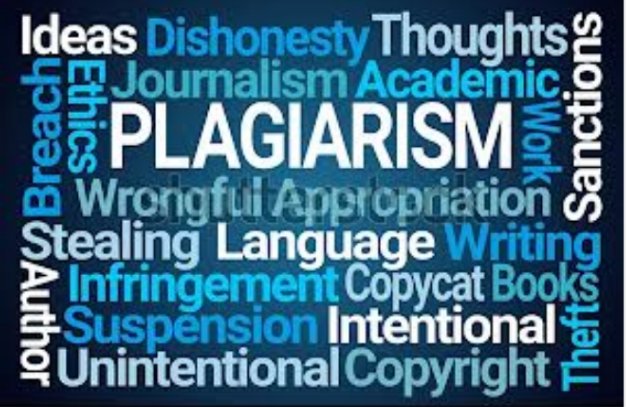ARCHIVEMENT3: CONTENT ETIQUETTE by @nanc
Plagiarism
Plagiarism is presenting someone else’s work or ideas as your own, with or without their consent, by incorporating it into your work without full acknowledgement. All published and unpublished material, whether in manuscript, printed or electronic form, is covered under this definition. Plagiarism may be intentional or reckless, or unintentional. Under the regulations for examinations, intentional or reckless plagiarism is a disciplinary offence 1
As we’ve said before, plagiarism is the dishonest act of trying to pass someone else’s work off as your own.
In this post, we discuss the different types of plagiarism, including examples, so we can avoid plagiarism in our writing.
7 types of plagiarism
In this section, we’ll cover the 7 most common types of plagiarism:
1. MOSAIC OR PATCHWORK PLAGIARISM
With this type of plagiarism, the work of someone else is simply paraphrased without proper citation. It’s often difficult to detect because the plagiarized material is interwoven with many different sources, including the writer’s own ideas and perspective.
This type of paraphrasing can be done from one or several sources. The writer may try to change up the sentence structure or use synonyms to make it seem original. However, taking the idea of another piece is still plagiarism, even if the words are switched up a bit and intermingled with original thought.
2. PARAPHRASING PLAGIARISM
Paraphrasing, or incremental plagiarism, is the most common type of plagiarism. It’s similar to the mosaic plagiarism style mentioned above. However, the difference is that the copied work isn’t mixed in with new concepts and research. When you paraphrase the original idea in your own words, the borrowed material stays the same throughout the new piece.
3. COMPLETE PLAGIARISM
Complete plagiarism is more common in academic writing than in content marketing or other types of online writing. This type of plagiarism occurs when someone tries to submit an entire research paper as their own without proper attribution.
For example, this involves copying and pasting the original work in its exact words. The only thing that is changed is the author’s name
4. SELF-PLAGIARISM
Also known as auto-plagiarism, self-plagiarism happens when you copy your own writing, whether intentional or not. Often the person in a self-plagiarism incident is summarizing or repurposing their own work instead of writing a whole new piece from scratch on the same topic.
Many people think self-plagiarism is harmless because you aren’t stealing from someone else. Just yourself. But, this type of plagiarism can be just as damaging as any other.
For example, if you are writing web pages and you are caught plagiarizing, you could end up getting penalized by Google for duplicate content.
5. ACCIDENTAL PLAGIARISM
Plagiarism doesn’t always happen on purpose. It’s still considered plagiarism when someone copies another’s writing without citing their source, improperly cites the source or leaves out quotation marks on accident. Just because the omission or incorrect citation was accidental doesn’t mean plagiarism hasn’t been committed. This is why it’s important to check any work and when in doubt, give your source credit.
6. SOURCE-BASED PLAGIARISM
This type of plagiarism refers to instances when misleading sources are involved. For example, the writer may have two sources of information but only reference one. Another form of source-based plagiarism would be when an author quotes a non-existent or incorrect source.
7. DIRECT OR VERBATIM PLAGIARISM
Direct plagiarism, also known as verbatim or copy-paste plagiarism, is an intentional and unethical form of stealing content. As the name suggests, the writing is stolen word for word and pasted into the new piece. The author then tries to pass off the content as their own. A word or two might be changed, but this type of plagiarism is too blatant to be considered paraphrasing 2
consequences of plagiarism
The consequences of plagiarism can be personal, professional, ethical, and legal. With plagiarism detection software so readily available and in use, plagiarists are being caught at an alarming rate. Once accused of plagiarism, a person will most likely always be regarded with suspicion. Ignorance is not an excuse. Plagiarists include academics, professionals, students, journalists, authors, and others. 3
Inorder to prevent students from plagiarism the free plagiarism checkers can be use and proper quotations of documents.

Hello @nanc,
I am glad to see you have understood this task and promises to do your best to embrace them. Keep up the good work and best of luck in your next task.
R2
Thanks very much
Hi, @nanc,
Your post has been supported by @nattybongo from the Steem Greeter Team.